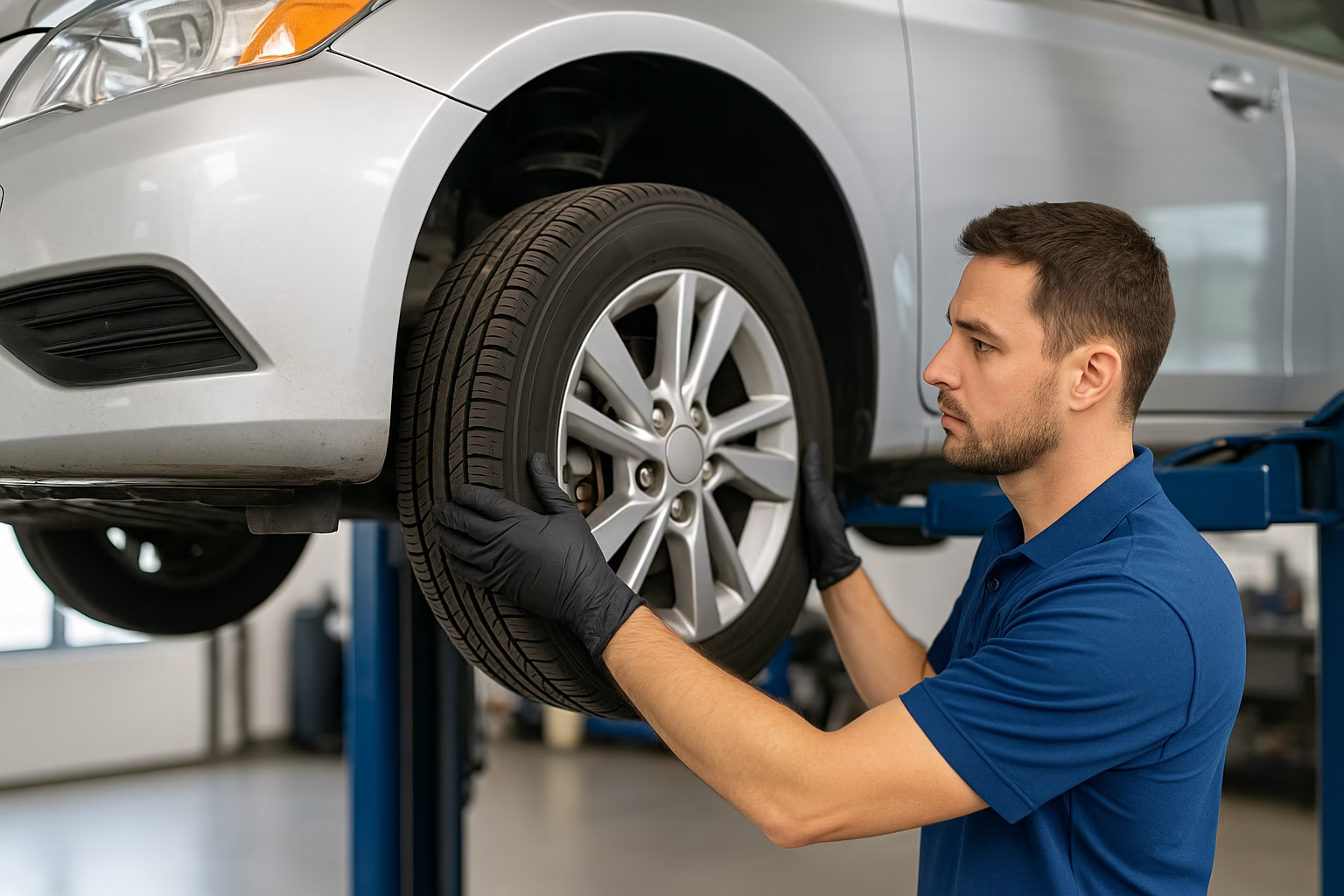Making changes to your vehicle’s tyres, wheels or suspension can drastically alter how it looks and handles. Off‑roaders add lift kits and bigger tyres for ground clearance; enthusiasts lower cars and fit wider wheels for better grip. However, advanced driver assistance systems (ADAS) depend on precise geometry. Even small changes to ride height or tyre diameter can tilt cameras, misdirect radar beams and confuse steering angle sensors. In this article we explore why tyre and suspension modifications impact ADAS, when calibration is required and best practices to keep these systems working properly.
Why modifications matter for ADAS
ADAS sensors are calibrated relative to the vehicle’s centreline and ride height. Radar modules are aimed to project their beam straight ahead; cameras behind the windscreen read lane markings based on a fixed field of view. When you raise or lower the vehicle, change tyre diameters or install wheels with a different offset, the angles and heights of these sensors shift. Even minor misalignment can reduce detection range or cause false positives. The Activate Group notes that sensors knocked out of position during repairs can cause safety features to stop working or intervene unnecessarily – a risk that also applies to modifications.
According to MRT Auto Clinic, recalibration isn’t only for collision repairs; it’s needed whenever tyres are changed to a different size, suspension components are replaced or the vehicle height is altered . Fitting oversized off‑road tyres may lift the nose by a few centimetres, causing the forward radar to aim high and miss smaller vehicles. Installing low‑profile performance tyres can drop the ride height and change wheel speed readings used for stability control. To maintain accuracy, sensors should be recalibrated after any such modification.
Tyre and wheel changes
Changing tyre size alters the rolling radius of the wheel. A larger diameter lifts the vehicle, while a smaller diameter lowers it. Both affect the radar and camera mounting angles and the distance sensors must see over the bonnet. Wheel offset also matters: aftermarket wheels that push the tyre further outward can expose sensors to more road spray or change aerodynamics around bumper‑mounted radar. After changing tyres or wheels, technicians should:
- Perform a wheel alignment and steering angle reset. Ryan Gerber from Modern Tire Dealer explains that almost every ADAS calibration begins with an alignment because misaligned wheels point radar beams off course . Alignment should be checked and corrected before calibration.
- Check tyre pressure and calibrate tyre pressure monitoring systems. Incorrect pressures can trigger warning lights and alter rolling circumference.
- Recalibrate radar and camera systems. Use static or dynamic calibration procedures to adjust for the new ride height.
Suspension lifts and lowering kits
Suspension modifications change the distance between the vehicle body and the road. Lift kits for utes or SUVs raise the chassis, altering the angle of sensors. Lowering springs or coilovers reduce ride height, which may cause front radar modules to aim downward and cameras to see less of the road ahead. Replacing struts, control arms or bushings also affects geometry. MRT Auto Clinic lists suspension repairs as one of the scenarios requiring ADAS calibration . Best practices include:
- Follow manufacturer specifications for ride height. After installation, measure ride height and ensure it is within specified tolerances; some systems have height sensors that need recalibrating.
- Align the wheels and reset the steering angle sensor. A calibration will be ineffective if the steering angle sensor is off centre.
- Choose a shop equipped for both static and dynamic calibration. Static calibration uses targets and laser tools in the workshop ; dynamic calibration requires a road test at specified speeds . Suspension lifts often need a combination of both.
Performance modifications and speciality kits
Adjustable coilovers, air suspension and heavy‑duty tow packages offer versatility but can confuse ADAS. Air suspension can change ride height on the fly, requiring recalibration in each ride mode. Heavy bumpers or bull bars add weight and may partially block sensors. Activate Group warns that misaligned sensors can cause safety features to fail or intervene when not needed . When fitting aftermarket bumpers or bars, ensure sensor modules are relocated or recalibrated according to manufacturer guidelines.
Calibration workflow after modifications
A proper calibration sequence ensures ADAS continues to function after modifications:
- Pre‑scan and documentation. Scan for existing diagnostic trouble codes and note steering angle values. Document the vehicle’s pre‑modification alignment and ride height.
- Complete mechanical work. Install tyres, wheels, suspension or accessories according to manufacturer instructions.
- Wheel alignment and steering angle reset. Align the vehicle to OEM specifications and reset the steering angle sensor.
- Calibrate sensors. Determine whether static, dynamic or a combination of both calibrations is required. Static calibration uses targets and radar reflectors; dynamic calibration requires driving on a clear road while a scan tool monitors sensor status .
- Post‑scan and road test. Verify that all DTCs are cleared and that ADAS features operate correctly. Record final measurements and provide documentation to the customer.
Conclusion
Tyre and suspension modifications can enhance off‑road capability or improve handling, but they also disrupt the carefully calibrated geometry ADAS systems rely on. Even small changes to ride height or wheel alignment can misdirect radar and camera sensors. Industry experts note that calibration is required not just after collisions but after tyre changes, suspension repairs and height modifications . Technicians should treat alignment and calibration as part of any modification job and educate customers about the need for recalibration. By following best practices and using the right equipment, you can enjoy your upgraded wheels and suspension without compromising on safety.

Hiran Alwis is an automotive lecturer and ADAS specialist with over 15 years of experience in diagnostics, advanced safety systems, and technical training. He founded ADAS Project to help everyday drivers and workshop technicians understand and safely use advanced driver assistance systems.
